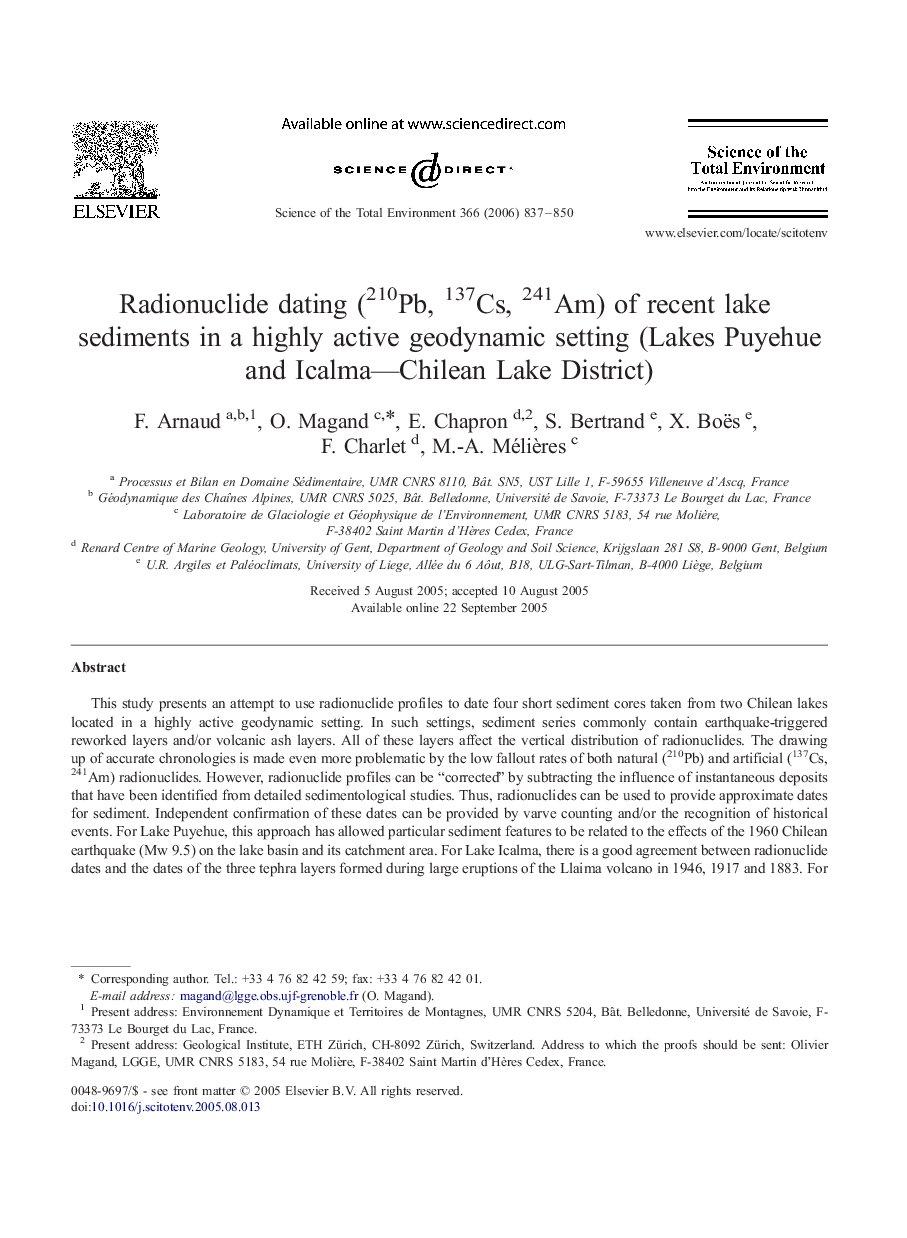| Article ID | Journal | Published Year | Pages | File Type |
|---|---|---|---|---|
| 4434138 | Science of The Total Environment | 2006 | 14 Pages |
This study presents an attempt to use radionuclide profiles to date four short sediment cores taken from two Chilean lakes located in a highly active geodynamic setting. In such settings, sediment series commonly contain earthquake-triggered reworked layers and/or volcanic ash layers. All of these layers affect the vertical distribution of radionuclides. The drawing up of accurate chronologies is made even more problematic by the low fallout rates of both natural (210Pb) and artificial (137Cs, 241Am) radionuclides. However, radionuclide profiles can be “corrected” by subtracting the influence of instantaneous deposits that have been identified from detailed sedimentological studies. Thus, radionuclides can be used to provide approximate dates for sediment. Independent confirmation of these dates can be provided by varve counting and/or the recognition of historical events. For Lake Puyehue, this approach has allowed particular sediment features to be related to the effects of the 1960 Chilean earthquake (Mw 9.5) on the lake basin and its catchment area. For Lake Icalma, there is a good agreement between radionuclide dates and the dates of the three tephra layers formed during large eruptions of the Llaima volcano in 1946, 1917 and 1883. For both lakes, artificial radionuclide fallout, which culminated in 1965, provides more robust chronological information than 210Pb dating.
